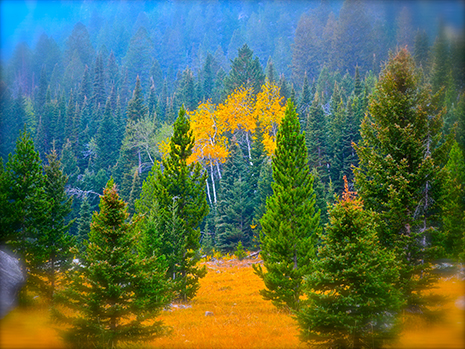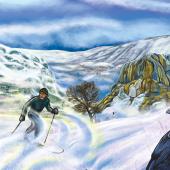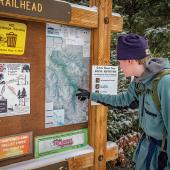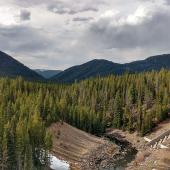National Parks vs. National Forests
Exploring Montana's public land this fall.
Not all public land is created equal, and when it comes to Montana's national parks and national forests, the latter is often overlooked. But why? Our national forests boast impressive scenery, endless recreation, and diverse landscapes. Here's a side-by-side comparison of our national forests and parks—use it to plan your fall adventures.

Access. At this point, accessing the landscapes that make up the national park and forest land within Montana is almost an afterthought. Paved roads, improved doubletrack, and endless trails crisscross the map, making it relatively easy to get where you want by car, foot, or bike.
Recreation. No one would argue that options are few in the parks or forests, but because of the wilderness quality of the parks, forests often allow for a more diverse array of recreational opportunities, such as mountain biking, hunting, and less restrictive fishing. While national forests do contain some more regulated Wilderness Areas, if you’re goal is to use the land, forests are where it’s at.

Scenery. Montana’s national parks are among the country's most famous and contain some of the most iconic sights in the world: Old Faithful, the Lamar Valley, Going-to-the-Sun Road. But the state’s highest peak is in national forest, as are some of its most notable natural features and historic sites, such as Gates of the Mountains. Neglecting these sites would be doing yourself a disservice, and while they might not appear nightly on your TV screen, they are well worth a closer look.
Crowds. Our national parks have taken on a Disneyland-esque quality with long lines, big crowds, and lots of traffic. Fall is a good time to avoid these hassles. Forests are generally traffic-free (unless you're headed up to Hyalite) and rarely require year-long waiting lists for campsites. This isn’t to say they’re empty, but you’re less likely to run into hordes of European tourists and teen-tour adventurers.
Costs. While both the parks and the forests can be cheap compared to beach resorts or city-centric vacations, parks have an entry fee, and forests generally don’t. To fish or hunt in either, you need a license, and established campgrounds often cost some dough regardless of which federal bureau is in charge. But once you’ve ponied up for those relatively small expenses, don’t expect to spend much more in the forests. Parks, on the other hand, abound with additional surcharges such as special fishing permits and backcountry campsite reservations. And don't forget about all the parks' commercial vendors – restaurants, gift shops, et al – that will end up costing a pretty penny.
Wildlife. Yellowstone’s wildlife viewing is unrivaled anywhere in the country, and even from the car you are sure to see more megafauna than anywhere else. That being said, I’d rather see one muley solo on the trail than a few hundred bison among a herd of Midwesterners. (Nothing against Midwesterners—my family is from Michigan. Go Blue!)
Whether you choose parks or forests, public land abounds in Montana, and fall is a great time to explore it. So pack that extra layer or two, break out the map, and hit the road. Keep in mind that some roads and campsites close as the season progresses. Double check with agency websites for the most up-to-date info and always keep the tank at least half full.
Happy trails.
Editor's note: While we currently enjoy access to tens of millions of acres of federally-managed lands, many state politicians are pushing to transfer ownership to local government, potentially limiting recreational opportunities. This issue is a hotly contested one, and won't be resolved anytime soon. Stay tuned to our digital edition for more information and pick up our upcoming fall issue for an in-depth look at land-management policy in Montana.












